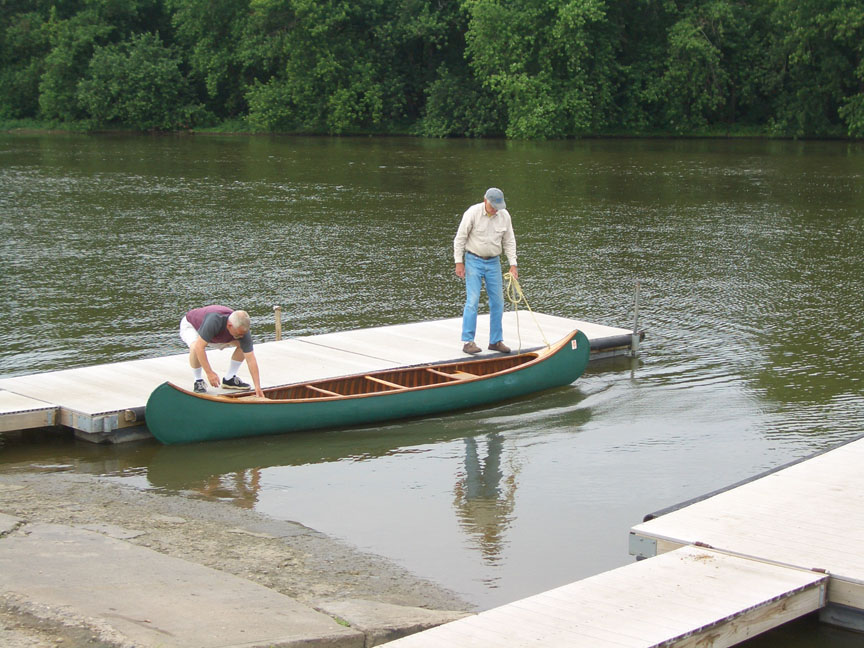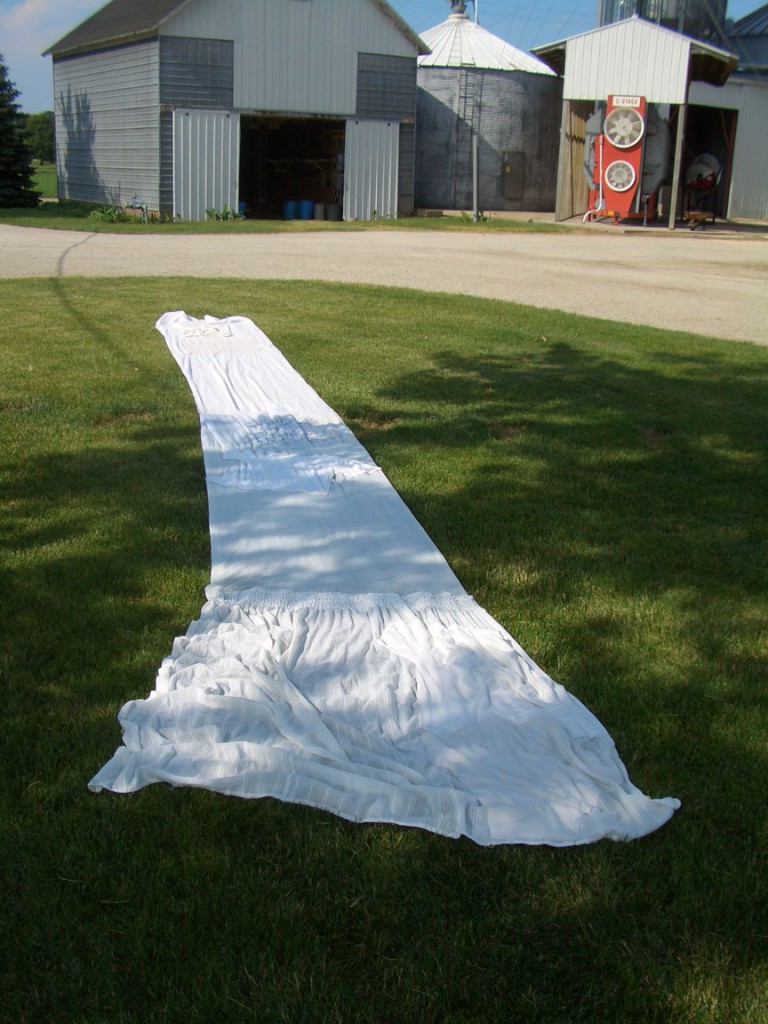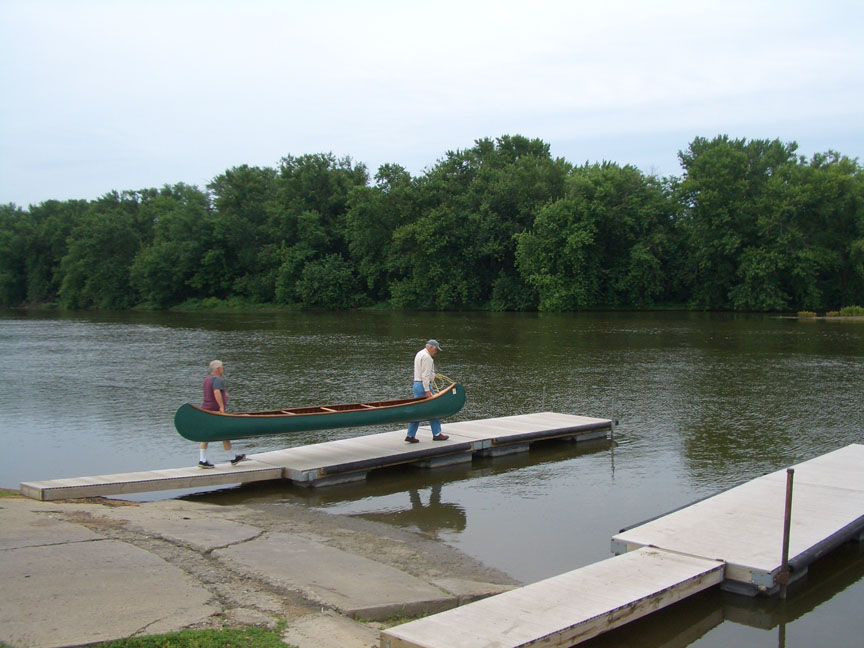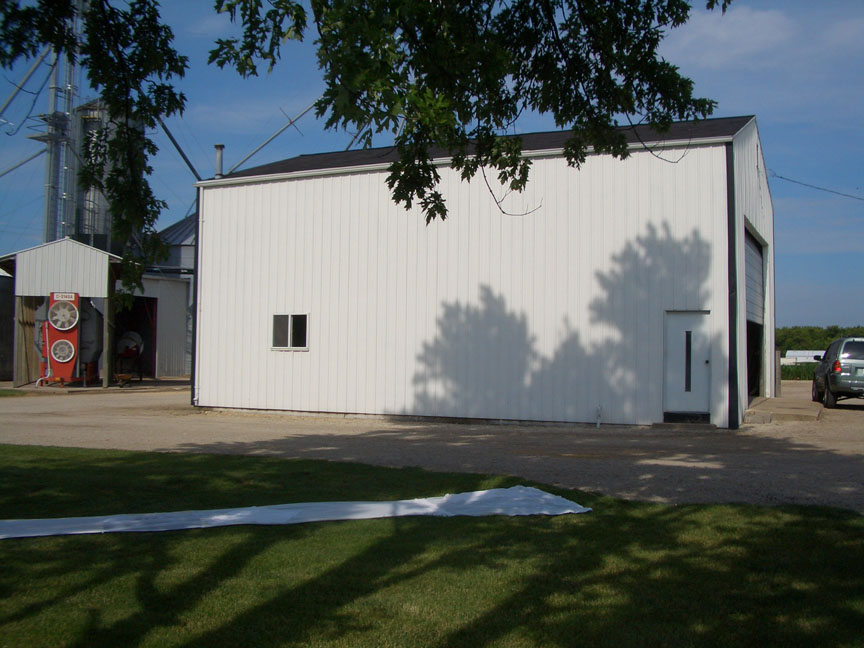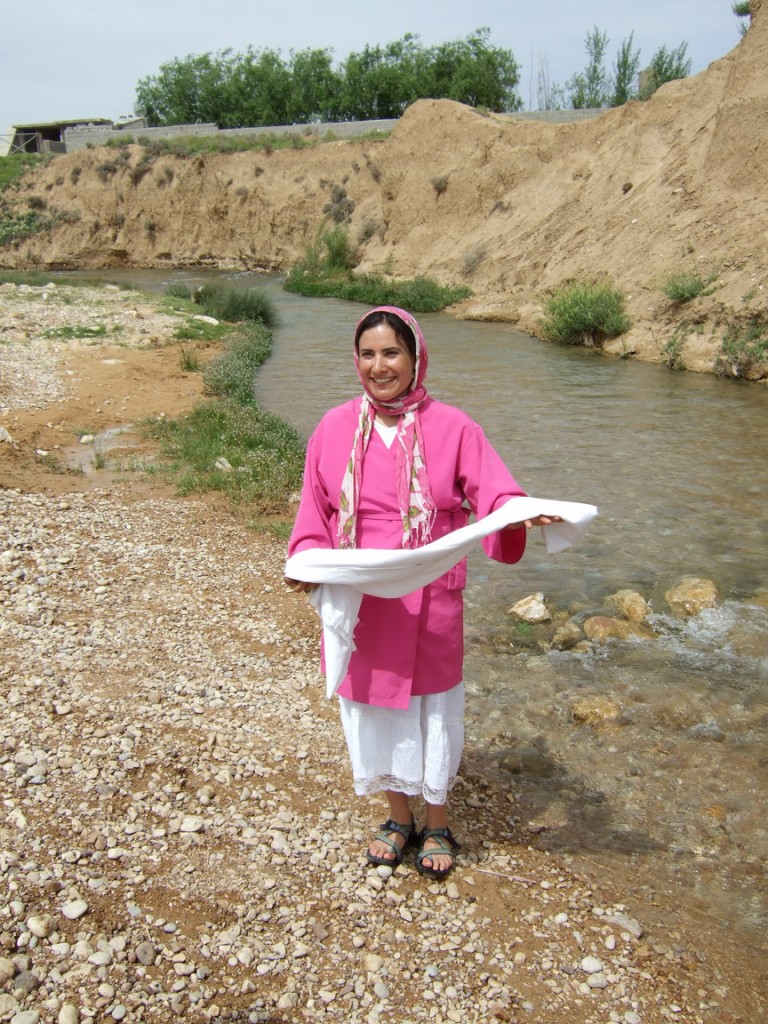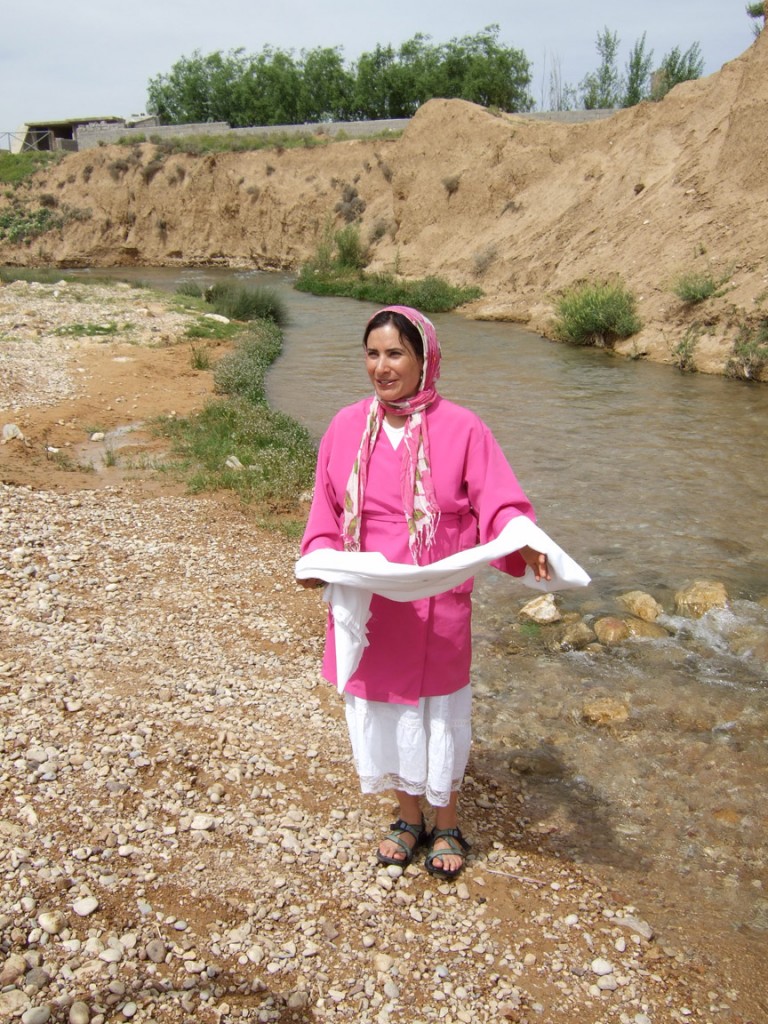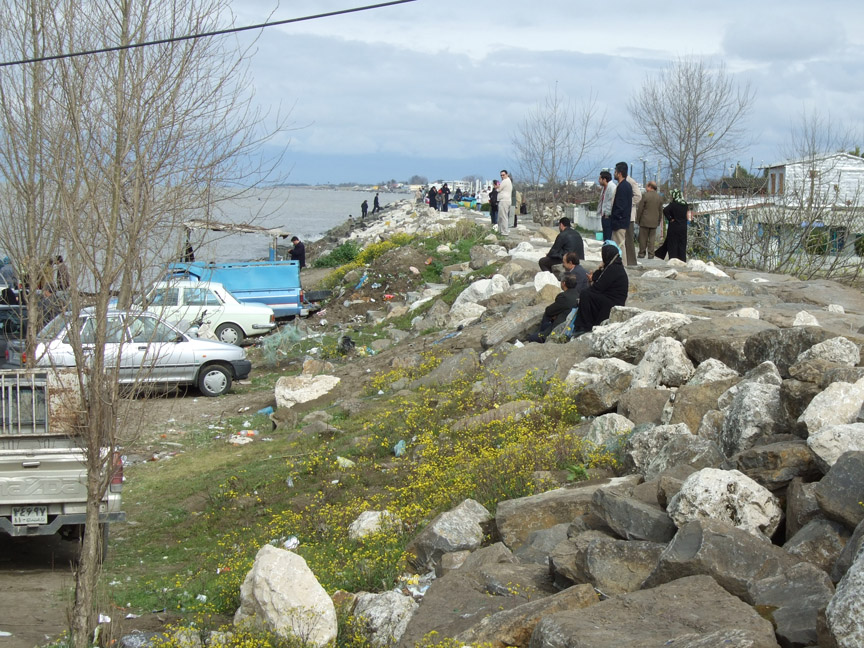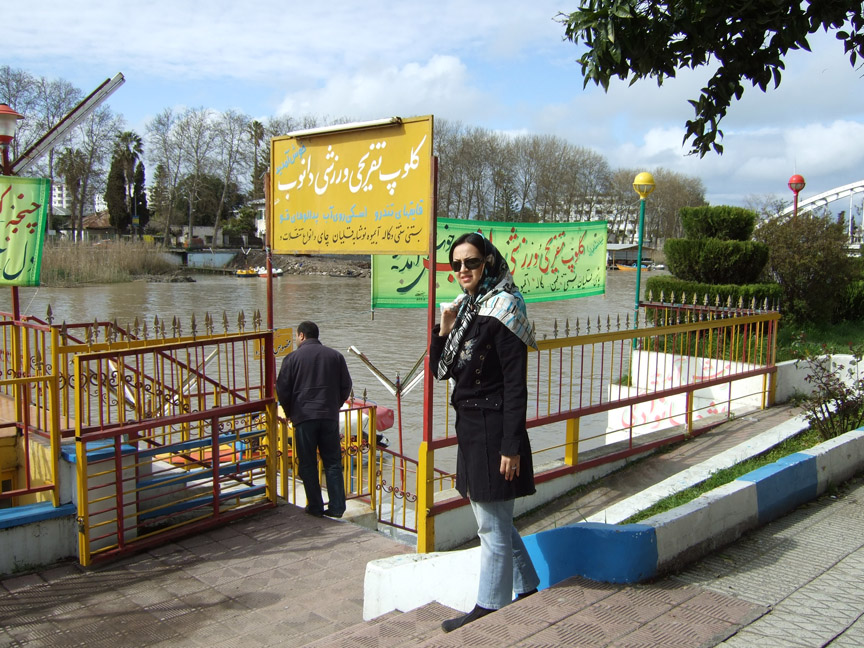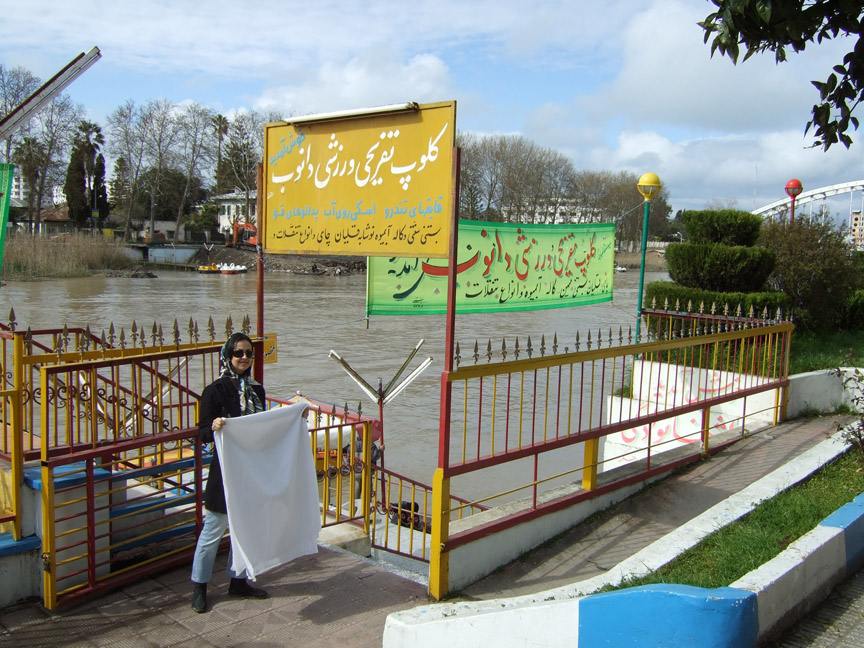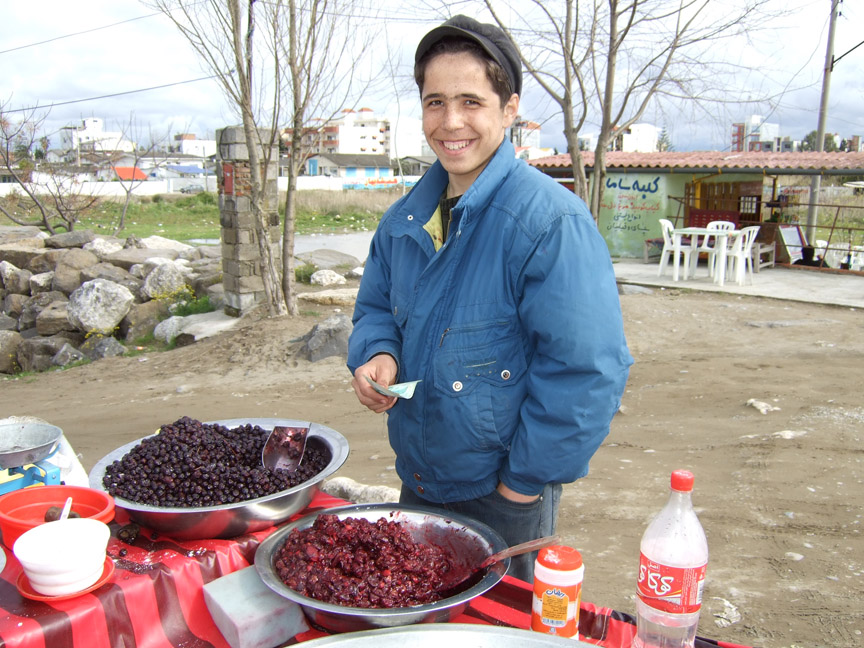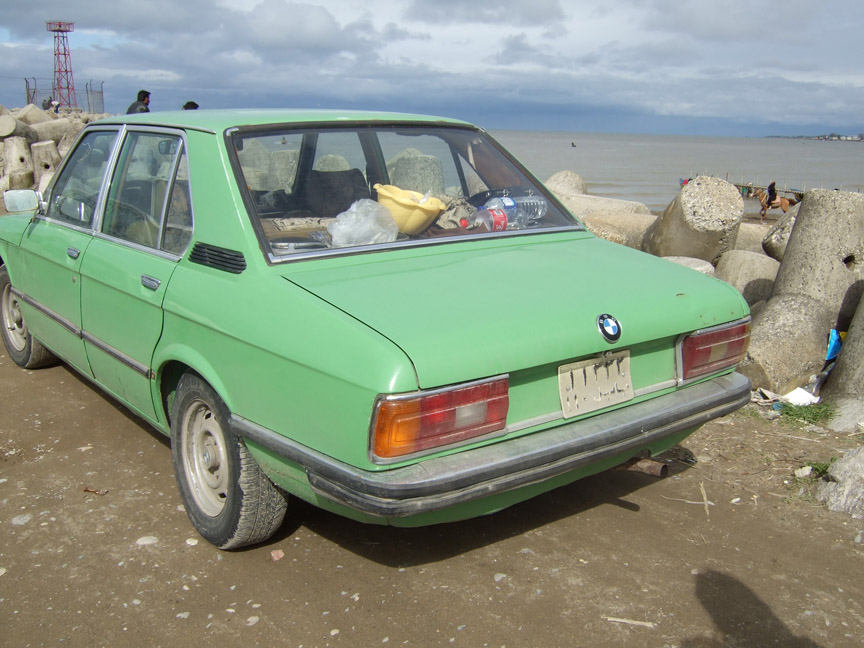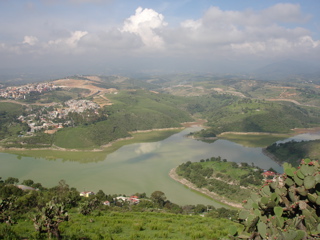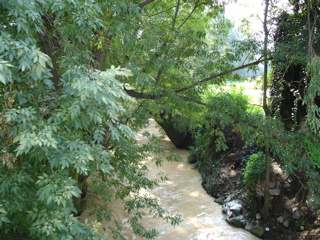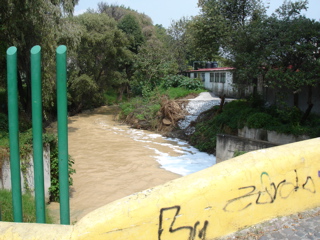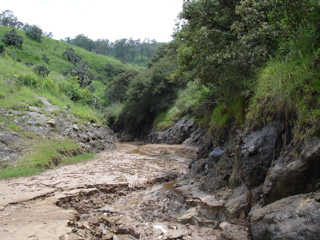Artist Cathi Bouzide, Doug Wean, Betty and Richard Adams and community friends create a long fabric train of assosrted collected items (aprons, curtains, etc.) and stitched them together for a ride through the river.
Thanks so much! All of the sites look incredible. The white is stunning. What an amazing project. Did you ever think…I am thrilled to have been part of the World Rivers Project; the speaking of it; the assembly of white things from people’s homes; the preparation; the act of the cloth in the river and the drying of the fabric were all a big part of my residency that week. Many are aware of the agricultural run off into the rivers, lakes, and ponds of our world. When I visit Oregon (four years this year) there are many difficult topics touched on lightly through discussion in addition to the art we make. Facilitating a World Rivers experience in a largely agricultural region was brave for me. The images I shared of the experience speak to the unsaid words and connections that World Rivers brought for me and the people of Oregon, IL. Thanks for that Lee. — Cathi
